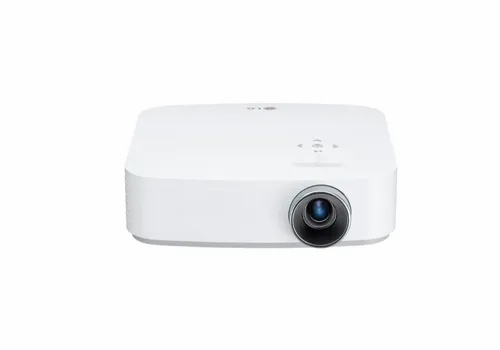Beam Projectors: Unveiling the Revolution in Projection Technology
Introduction
Welcome to the future of display technology – beam projectors. These innovative devices are revolutionizing the world of display projection, providing an unmatched viewing experience. Whether you’re a home theater enthusiast, a professional presenter, or someone who values superior projection quality, this article is for you. Dive in and discover what a beam projector is, how it works, its significant differences from traditional projectors, and why you might want to choose one for your needs. We also provide a helpful guide on what to look for when purchasing a beam projector and answer some frequently asked questions. Let's begin this enlightening journey!
What is a Beam Projector?
As we venture into a new era of audio-visual technology, the beam projector, often referred to as a laser projector, stands at the forefront. This cutting-edge device hinges on the power of lasers rather than conventional lamps to project images. Here are the key elements to understand:
- Concept: A beam projector leverages sophisticated laser technology in the process of image projection. This leads to a vibrant, crisp, and high-definition viewing experience.
- Major Advantage: One of the core advantages over traditional projectors is its unsurpassed image quality. The output not only boasts high-definition but also outperforms traditional projectors in color richness and sharpness.
- Preferred Choice: These projectors’ robust features, longer lifespan and reduced energy consumption make them an increasingly preferred choice across contexts starting from professional presentation venues to home cinema setups.
Transitioning from traditional projectors to a beam projector promises to elevate your viewing experience. This transformation brings laser's power to your projector unit, giving you sharper and brighter projections, whether for work presentations or movie nights at home. The capabilities of beam projectors pave the way to a new chapter in projective technology, creating exciting opportunities for consumer and professional use.
How Do Beam Projectors Work?
For a layperson, understanding how beam projectors operate can initially seem complex. Let's simplify this by breaking it down into manageable steps to explain the technology behind their unparalleled image projection:
1. Laser Diodes:
The beam projector operates with numerous laser diodes, which are responsible for emitting highly focused laser beams. The type of laser used also determines the light's color.
2. Hitting the DMD:
Once emitted, these laser beams meet a Digital Micromirror Device (DMD). The DMD comprises millions of minute mirrors, and each of these mirrors signifies a pixel on the screen. The role of the DMD is to deflect the received light through a lens on the projection surface.
3. Controlling Each Pixel:
Intriguingly, each tiny mirror on the DMD can tilt, which means that they can adjust the level of light they reflect. This functionality empowers the beam projector to control every pixel's intensity and color, offering images that are more luminous and sharper than traditional lamp-based projectors.
4. Generation of Vibrant Colors:
Beam projectors' use of laser technology facilitates the generation of vibrant colors, including pure blacks, which are known to be tough for traditional projectors to reproduce.
These steps culminate in producing vivid, high-definition images, propelling beam projectors to be the top choice for those seeking superior projection quality.
To encapsulate, beam projectors use advanced technology to convert laser beams into impressive visual displays, offering unparalleled projection experiences. Hence, they might be an excellent addition to your home theater or business presentation needs.
Comparing Beam Projectors to Other Projector Devices: How Do They Vary?
When it comes to performance, features, and quality, beam projectors distinctly differ from their traditional counterparts. Let's delve into a comparative analysis of these two types:
Light Source
- Traditional Projectors: They use standard lamps to generate light for image projection.
- Beam Projectors: They leverage innovative laser technology to form the image.
Brightness and Image Quality
- Traditional Projectors: The image quality and brightness may begin to decline over time. Color reproduction, particularly with black tones, can be a challenge.
- Beam Projectors: These devices ensure consistent brightness levels and produce more vibrant colors even over extended periods. The image sharpness remains consistent even at large sizes, providing an advantage in brightly lit rooms where traditional projectors may falter.
Lifespan and Maintenance
- Traditional Projectors: The lamps used have a limited lifespan and may need to be replaced periodically, adding to maintenance costs.
- Beam Projectors: Laser technology helps these projectors to last longer with minimal maintenance, thereby reducing costs in the long run.
Compactness and Convenience
- Traditional Projectors: They may be bulky and less portable, with the necessity for bulb warm-ups and cool-down periods.
- Beam Projectors: Compact in size, the beam projectors offer ease in portability. They also provide rapid power-up and shut-down times, eliminating any need for bulb field-warming or cooling periods.
Cost
- Traditional Projectors: Available at a relatively lower initial cost.
- Beam Projectors: Although the upfront cost is higher, long-term saving on maintenance and replacement lamps make them a cost-efficient choice for many.
While cost may initially seem a drawback for beam projectors, the advantages they offer in terms of image quality, longevity, and lower overall maintenance costs make them a strong contender in the projector market.
Why Choose Beam Projectors Over Traditional Ones?
Beam projectors come with several advantages over traditional ones, which make them a preferable choice for many individuals seeking a superior viewing experience. Here are the reasons why you might want to invest in a beam projector:
1. Unrivaled Image Quality: Beam projectors provide significantly brighter and sharper images compared to traditional ones. They boast a richer color palette, ensuring vibrant visuals that can enhance your viewing experience remarkably.
2. Extended Lifespan: Beam projectors have a longer lifespan than their traditional counterparts, which use lamps that require frequent replacements. This extended lifespan contributes to reduced maintenance costs in the long run.
3. Compact and Portable: Most beam projectors are considerably compact, making them highly portable. This is ideal if you have to set it up in different locations frequently.
4. Economical Over Time: Despite the initial high investment, beam projectors can prove to be a more cost-effective option over time. This is primarily because of their longevity and the savings derived from lower maintenance costs.
In a nutshell, while traditional projectors might have a lower upfront cost, beam projectors provide a significantly superior performance, convenience, and a longer lifespan. Therefore, selecting a beam projector can be viewed as a long-term investment that offers a better return in both quality and durability.
What to Look for When Purchasing a Beam Projector?
When embarking on a journey to acquire a beam projector, it's beneficial to have clear parameters about the essential features it should embody to suit your individual needs. Here are crucial factors to keep in mind:
1. Image Quality: Check the descriptions for attributes like brightness, contrast ratio, and resolution. These elements offer insight into the anticipated image quality. A high-definition projector is generally recommended for delivering an excellent visual experience.
2. Lifespan and Durability: Beam projectors can be a considerable investment. Therefore, it's essential to confirm the projector’s lifespan and durability to avoid premature replacements.
3. Size and Portability: If you intend to use your projector in various locations, considering size and portability is a must. Beam projectors are generally compact, further enhancing their appeal to on-the-go users.
4. Extra Features: Modern beam projectors come with a host of additional features. These include 3D capabilities, built-in speakers, wireless connectivity, and device compatibility. A good projector should align with your technological ecosystem and provide seamless integration.
5. Budget: Establish a clear budget. Beam projectors are available in a wide price range. Knowing your financial limit will help streamline your options and prevent overspending.

Remember, the perfect beam projector should strike a balance between quality, functionality, and price.

Conclusion
In conclusion, beam projectors are an exciting advancement in projection technology, offering superior image quality, lower maintenance costs, and compact size. Whether you choose a beam projector for personal or professional use, you're investing in a device that aims to provide an unparalleled viewing experience. So why wait? Join the revolution in projection technology with a beam projector.
Related FAQs about what is a beam projector
What are the common uses of a Beam Projector?
Beam projectors are versatile devices often used in various settings. They are popular in home entertainment systems, where they provide a cinematic experience. In the corporate world, they are used for high-definition presentations in conferences or meetings. Art galleries and museums also use them to highlight exhibits.
How to maintain and care for a Beam Projector?
Beam projectors require minimal maintenance. Use a soft cloth to remove dust from the lens and the outer body. Avoid placing the projector near heat sources. It's also advised to operate the projector in a well-ventilated space to prevent heat build-up, prolonging its lifespan.
What is the future outlook for Beam Projectors in home entertainment?
Beam projectors' future looks promising. As technology continues to evolve and more people appreciate the benefits of home theater systems, demand is likely to increase. Beam projectors' superior image quality, compactness, and longevity position them well for growing adoption in home entertainment.


